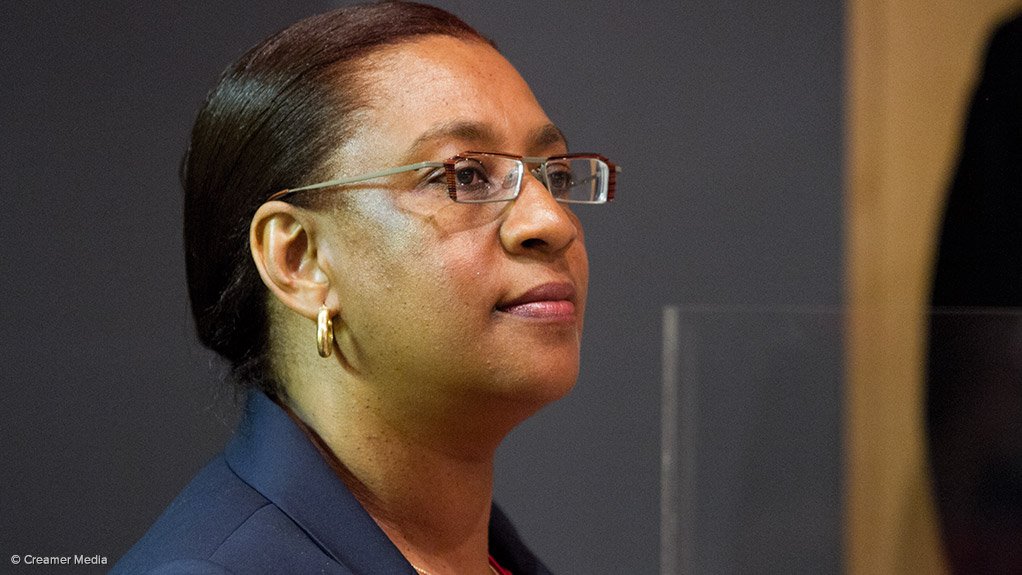JOHANNESBURG (miningweekly.com) – The European benchmark ferrochrome price for the fourth quarter of 2016 has been settled at 110c a pound, 12.2% up on the 98c-a-pound price of the third quarter.
Johannesburg Stock Exchange-listed Merafe Resources said last month that it expected to benefit from renewed positive ferrochrome demand trends, as well as from only four of seven South African ferrochrome producers currently being in production.
Merafe – headed by CEO Zanele Matlala – generates income primarily from the Glencore–Merafe Chrome Venture.
In reporting its results for the six months ended June 30, Merafe indicated higher demand prospects for ferrochrome on the likelihood of global stainless steel production growing 2.6% this year and by 3.1% in 2017.
CRU senior ferrochrome consultant Mark Beveridge, who is responsible for CRU’s ferrochrome market outlook, ferrochrome cost service and chrome monitor publications, describes the recovery of the South African chrome industry over the last four months as being “dramatic”.
Beveridge, who joined CRU in 2012 from the International Chromium Development Association where he was in-house market analyst, points out that chrome ore prices have rebounded substantially on strong second-quarter Chinese demand.
“A combination of stimulus-linked demand for ferrochrome in China and a relative absence of chrome inventory led to a scrabble for South African ore,” he wrote in a document forwarded to Creamer Media’s Mining Weekly Online.
The recovery in chrome prices also coincides with what the research group believes to be significant moves to consolidate the South African industry.
CRU believes such consolidation should pave the way for the creation of a stronger South African chrome sector that is able to regulate the supply of both ore and alloy better than has been possible in recent years, while also ensuring South Africa's overall charge chrome output increases in future.
COMPETITIVENESS OF INTEGRATED ORE SUPPLY
Beveridge contends that South African charge chrome producers Tata KwaZulu-Natal (KZN), International Ferro Metals (IFM) and ASA Metals (ASA) ceased operating primarily because they could not rely on a fully integrated supply of ore.
This was so either because of the absence of a direct link to a South African chrome ore mine, as was the case with Tata KZN, or as a result of the burden of increasingly high-cost, unproductive mines, as was the case with IFM and ASA.
He makes the point that Hernic, although still operating, has had similar difficulties.
These plants' inability to supply their ore needs meant that all too often they had to buy material on the open market, where prices were on a par with those paid by Chinese importers.
As the cost of shipping chrome ore from South Africa to China declined in recent years, the competitive advantage of being located close to chrome ore resources diminished to the point where smelters, which otherwise had no special technical attributes, were no longer profitable.
It now looks as though these plants could come back into operation as a result of a series of takeovers that would consolidate the South African charge chrome sector into two large groups, one led by Samancor, the other by Glencore.
The rationale for these moves would be to integrate the currently inactive smelters into Samancor and Glencore's respective chrome ore supply chains.
CRU points out that Samancor, which has clinched the takeover of the IFM smelter, which is located close to its Western Chrome Mines of Mooinooi and Millsell, aims to resuscitate the former 267 000 t/y IFM plant during the last quarter of this year.
The research firm also speculates on some sort of joint venture being possible between Samancor and Sinosteel over the ASA Metals plant, which would result in the 410 000 t/y ASA plant at Dilokong being integrated into Samancor's Eastern Chrome Mines in the Steelpoort region.
If that does not go ahead, it speculates on other parties possibly showing interest in ASA Metals.
CRU reports further that Traxys is planning to restart the former 150 000 t/y Tata KZN plant at Richards Bay with ore from its mines in Steelpoort and Sefateng, both 600 km-plus from Richards Bay.
These developments, it says, are likely to increase the likelihood of Glencore bidding for the 420 000 t/y Hernic, owing to its majority Mitsubishi shareholder being open to offers.
Glencore dominates the trade of upper group two (UG2) concentrate on the Bushveld Complex's western limb, which CRU contends makes it a good fit for the Hernic plant, which is located close to Rustenburg.
If such consolidation occurs, Glencore's overall capacity would rise to around 2.7-million tonnes a year, while Samancor would control slightly more than 2-million tonnes of capacity through joint ventures.
Traxys and Afarak would retain a place in the charge chrome market, but would be tiny compared to the two main producers, CRU says.
“Broadly speaking, consolidation appears to be the simplest means for South Africa to make the most of its existing charge chrome capacity in future,” CRU adds.
As reported by Mining Weekly Online, South Africa’s mature chrome endowment is in need of maximising jobs and driving sustainability given that its value chain at one stage employed 200 000-plus people and contributed R42-billion in gross domestic product a year.
South Africa, with significant ferrochrome manufacturing facilities, needs to reaffirm its leadership in ferrochrome technology, where it offers superior efficiencies.
Key highlights of South African innovation and investment include migration to closed furnaces to reduce carbon dioxide emission and up energy efficiency, pioneering the use of UG2 concentrate from platinum mining, cutting reliance on imported metallurgical coking coal imports through the use of locally produced anthracite and char and investing in captive power generation and cogeneration.
EMAIL THIS ARTICLE SAVE THIS ARTICLE
To subscribe email subscriptions@creamermedia.co.za or click here
To advertise email advertising@creamermedia.co.za or click here











